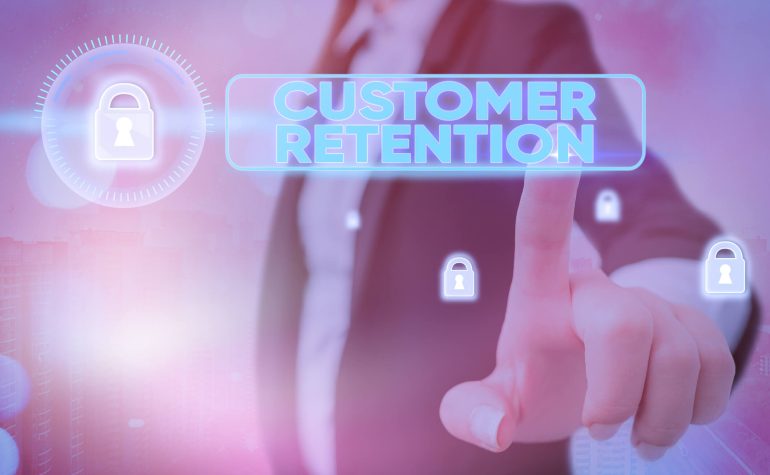
By alphacardprocess September 30, 2024
In high-risk businesses, customer retention can be a daunting task. These businesses operate in industries where there is a higher probability of financial loss or legal liability. Examples of high-risk businesses include gambling, adult entertainment, pharmaceuticals, and cryptocurrency. Retaining customers in such industries requires a unique approach due to the inherent risks involved.
This article will explore various strategies that high-risk businesses can employ to retain their customers effectively.
Building Trust: Establishing a Solid Foundation for Customer Retention

Building trust is crucial for any business, but it becomes even more critical in high-risk industries. Customers need to feel confident that their interests are protected and that the business is reliable. To establish a solid foundation for customer retention, high-risk industries should focus on the following:
- Transparency: High-risk industries should be transparent about their operations, policies, and potential risks. This transparency helps build trust and demonstrates a commitment to customer safety.
- Compliance: Adhering to industry regulations and standards is essential for high-risk businesses. By demonstrating compliance, businesses can assure customers that they are operating within legal boundaries and taking their safety seriously.
- Reputation Management: High-risk businesses should actively manage their online reputation. This includes monitoring and responding to customer reviews, addressing concerns promptly, and showcasing positive customer experiences. A positive reputation can help build trust and attract new customers.
- Partnerships and Certifications: Collaborating with reputable partners and obtaining relevant certifications can enhance a high-risk business’s credibility. Customers are more likely to trust businesses that have established relationships with trusted organizations.
Effective Communication: Enhancing Customer Engagement and Loyalty

Effective communication is vital for customer retention in high-risk industries. It helps foster engagement, build loyalty, and address any concerns or questions customers may have. Here are some strategies for enhancing communication:
- Clear and Timely Communication: High-risk businesses should ensure that their communication with customers is clear, concise, and timely. This includes providing accurate information about products or services, addressing customer inquiries promptly, and keeping customers informed about any changes or updates.
- Multiple Communication Channels: Offering multiple communication channels allows customers to choose their preferred method of contact. This can include phone, email, live chat, or social media. By providing various options, businesses can cater to different customer preferences and improve overall satisfaction.
- Personalized Communication: Tailoring communication to individual customers can significantly enhance engagement and loyalty. High-risk businesses can use customer data to personalize messages, offers, and recommendations. This personal touch makes customers feel valued and understood.
- Proactive Communication: High-risk businesses should proactively communicate with customers to address potential risks or concerns. This can include sending out safety reminders, providing updates on security measures, or offering tips to mitigate risks. Proactive communication demonstrates a commitment to customer safety and can help build trust.
Personalization: Tailoring Experiences to Meet Customer Needs
Personalization is a powerful tool for customer retention in high-risk businesses. By tailoring experiences to meet individual customer needs, businesses can create a sense of exclusivity and enhance customer loyalty. Here are some strategies for personalization:
- Customer Segmentation: High-risk industries can segment their customer base based on various criteria such as demographics, preferences, or purchase history. This segmentation allows businesses to target specific customer groups with personalized offers, recommendations, or content.
- Customized Products or Services: Offering customized products or services can be a significant differentiator for high-risk industries. By allowing customers to personalize their purchases, businesses can create a unique and memorable experience. This customization can range from product features to packaging or branding.
- Loyalty Programs: Implementing a loyalty program can incentivize customers to stay with a high-risk business. These programs can offer exclusive rewards, discounts, or access to special events. By rewarding customer loyalty, businesses can foster long-term relationships and increase customer retention.
- Personalized Marketing Campaigns: High-risk businesses can leverage customer data to create personalized marketing campaigns. This can include targeted emails, personalized recommendations, or tailored advertisements. By delivering relevant and timely messages, businesses can increase customer engagement and retention.
Offering Value: Providing Incentives and Benefits to Retain Customers
Offering value is crucial for customer retention in high-risk businesses. Customers need to feel that they are getting something worthwhile in return for their loyalty. Here are some strategies for providing incentives and benefits:
- Competitive Pricing: High-risk businesses should ensure that their pricing is competitive within the industry. Customers are more likely to stay with a business that offers fair prices and good value for their money. Regularly reviewing pricing strategies and adjusting them accordingly can help retain customers.
- Exclusive Offers: Providing exclusive offers or discounts to existing customers can incentivize them to stay with a high-risk business. These offers can be tailored based on customer preferences or purchase history. By making customers feel special, businesses can increase loyalty and retention.
- Rewards Programs: Implementing a rewards program can encourage repeat business and customer loyalty. High-risk businesses can offer points or credits for each purchase, which customers can redeem for discounts, freebies, or other incentives. Rewards programs create a sense of value and can significantly impact customer retention.
- Enhanced Customer Support: Providing exceptional customer support can be a significant differentiator for high-risk businesses. This includes offering 24/7 support, quick response times, and knowledgeable staff. By going above and beyond to assist customers, businesses can build trust and loyalty.
Managing Complaints: Turning Dissatisfied Customers into Loyal Advocates
In high-risk businesses, managing complaints effectively is crucial for customer retention. Dissatisfied customers can quickly spread negative reviews or switch to competitors. Here are some strategies for turning dissatisfied customers into loyal advocates:
- Prompt Resolution: High-risk industries should prioritize resolving customer complaints promptly. This includes acknowledging the issue, investigating it thoroughly, and providing a satisfactory resolution. By addressing complaints in a timely manner, businesses can prevent further dissatisfaction and retain customers.
- Empathy and Understanding: When dealing with dissatisfied customers, high-risk businesses should demonstrate empathy and understanding. This involves actively listening to customer concerns, apologizing for any inconvenience caused, and taking responsibility for any mistakes. By showing genuine care, businesses can rebuild trust and loyalty.
- Compensation or Incentives: In some cases, offering compensation or incentives can help appease dissatisfied customers. This can include refunds, discounts on future purchases, or free upgrades. By going the extra mile to make things right, businesses can turn negative experiences into positive ones and retain customers.
- Continuous Improvement: High-risk businesses should use customer complaints as an opportunity for continuous improvement. By analyzing feedback and identifying areas for enhancement, businesses can prevent similar issues from occurring in the future. This commitment to improvement demonstrates a dedication to customer satisfaction and retention.
Strengthening Security Measures: Mitigating Risks and Ensuring Customer Confidence
In high-risk businesses, ensuring customer confidence is paramount. Customers need to feel that their personal information and financial transactions are secure. Here are some strategies for strengthening security measures:
- Robust Data Protection: High-risk businesses should invest in robust data protection measures to safeguard customer information. This includes encryption, secure servers, and regular security audits. By prioritizing data security, businesses can instill confidence in their customers.
- Compliance with Privacy Regulations: Adhering to privacy regulations, such as the General Data Protection Regulation (GDPR), is essential for high-risk businesses. Customers are more likely to trust businesses that comply with these regulations and prioritize their privacy.
- Secure Payment Processing: High-risk businesses should ensure that their payment processing systems are secure and PCI-DSS compliant. This includes using encryption, tokenization, and secure payment gateways. By providing a secure payment experience, businesses can enhance customer confidence and retention.
- Transparent Security Policies: High-risk businesses should have transparent security policies in place and communicate them clearly to customers. This includes explaining how customer data is collected, stored, and used. By being transparent, businesses can build trust and reassure customers about their security measures.
Leveraging Technology: Utilizing Tools and Systems to Enhance Customer Retention
Technology plays a vital role in enhancing customer retention in high-risk businesses. By leveraging tools and systems, businesses can streamline processes, improve customer experiences, and increase loyalty. Here are some ways to utilize technology effectively:
- Customer Relationship Management (CRM) Systems: Implementing a CRM system can help high-risk businesses manage customer interactions, track preferences, and personalize experiences. CRM systems enable businesses to provide targeted offers, track customer satisfaction, and identify opportunities for retention.
- Automated Communication: High-risk businesses can use automation tools to streamline communication with customers. This can include automated emails, chatbots, or SMS notifications. By automating routine tasks, businesses can provide timely and consistent communication, enhancing customer engagement and retention.
- Predictive Analytics: High-risk businesses can leverage predictive analytics to anticipate customer behavior and preferences. By analyzing customer data, businesses can identify patterns, predict churn, and proactively address potential issues. Predictive analytics can help businesses tailor their strategies to meet individual customer needs and increase retention.
- Mobile Apps: Developing a mobile app can be beneficial for high-risk businesses. Mobile apps provide a convenient platform for customers to access products or services, receive personalized offers, and engage with the business. By offering a seamless mobile experience, businesses can enhance customer retention.
Continuous Improvement: Adapting and Evolving to Meet Changing Customer Expectations
High-risk businesses must continuously adapt and evolve to meet changing customer expectations. Customer preferences, industry regulations, and technology advancements can all impact customer retention. Here are some strategies for continuous improvement:
- Customer Feedback: High-risk businesses should actively seek customer feedback to understand their needs and expectations. This can be done through surveys, feedback forms, or social media listening. By listening to customer feedback, businesses can identify areas for improvement and enhance customer satisfaction.
- Market Research: Conducting regular market research can help high-risk businesses stay informed about industry trends, customer preferences, and competitor strategies. By staying ahead of the curve, businesses can adapt their offerings and strategies to meet changing customer expectations.
- Employee Training: High-risk businesses should invest in employee training to ensure that staff members are equipped with the necessary skills and knowledge to provide exceptional customer experiences. Well-trained employees can effectively address customer concerns, provide accurate information, and build rapport.
- Innovation: High-risk businesses should foster a culture of innovation to stay competitive and retain customers. This can involve exploring new technologies, developing unique products or services, or implementing creative marketing strategies. By continuously innovating, businesses can differentiate themselves and attract and retain customers.
FAQs
Q.1: How can high-risk businesses build trust with customers?
High-risk businesses can build trust by being transparent, complying with regulations, managing their reputation, and establishing partnerships and certifications.
Q.2: How can effective communication enhance customer retention in high-risk businesses?
Effective communication can enhance customer retention by providing clear and timely information, offering multiple communication channels, personalizing communication, and proactively addressing potential risks or concerns.
Q.3: What strategies can high-risk businesses employ to personalize experiences for customers?
High-risk businesses can personalize experiences by segmenting customers, offering customized products or services, implementing loyalty programs, and creating personalized marketing campaigns.
Q.4: How can high-risk businesses provide incentives and benefits to retain customers?
High-risk businesses can provide incentives and benefits by offering competitive pricing, exclusive offers, rewards programs, and enhanced customer support.
Q.5: How can high-risk businesses turn dissatisfied customers into loyal advocates?
High-risk businesses can turn dissatisfied customers into loyal advocates by resolving complaints promptly, demonstrating empathy and understanding, offering compensation or incentives, and continuously improving based on customer feedback.
Conclusion
Retaining customers in high-risk businesses requires a strategic and customer-centric approach. By building trust, enhancing communication, personalizing experiences, offering value, managing complaints, strengthening security measures, leveraging technology, and continuously improving, high-risk businesses can increase customer retention and foster long-term relationships.
It is essential for these businesses to adapt and evolve to meet changing customer expectations and mitigate risks effectively. By implementing the strategies outlined in this article, high-risk businesses can thrive in their industries and retain a loyal customer base.
